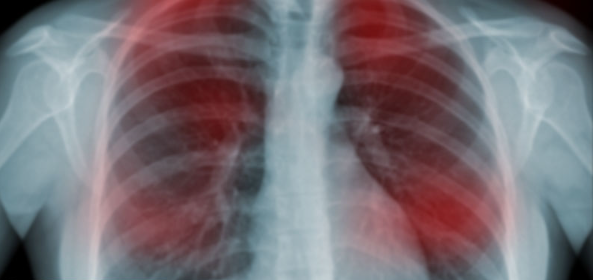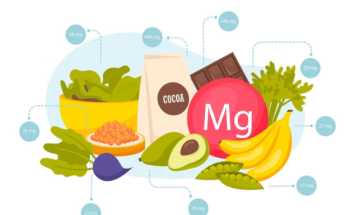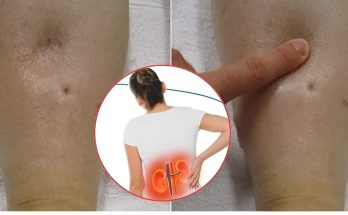Indirect Symptoms

Cancer can manifest in many ways, and not all symptoms are directly related to the primary tumor or affected area. Indirect symptoms of cancer are those that may arise due to the body’s response to the disease or its impact on other systems. These symptoms can be subtle or mimic other conditions, making them easy to overlook. Understanding these indirect symptoms is essential for early detection and timely intervention, which can significantly improve outcomes for those affected by cancer.
1. Wheezing/shortness of breath

Lung cancer patients remember noticing this as one of their first symptoms but didn’t initially connect it to cancer.
2. Frequent fevers or infections

Frequently a sign of leukemia, a cancer of the blood cells that starts in bone marrow. It causes the marrow to produce abnormal white blood cells that hinder your body’s infection-fighting abilities.
3. Difficulty swallowing

Most commonly associated with throat cancer, but could also be a good indicator of lung cancer.
4. Weakness and fatigue

Such a common symptom of cancer that it should be looked at in combination with other symptoms to determine which it is.
5. Feeling full and unable to eat

This is a sign of ovarian cancer. A loss of appetite even when you haven’t eaten for a while is a tip-off.
6. Anorexia

This could be an early sign of pancreatic cancer. A sudden disgust for coffee, wine or smoking can be linked to this as well.
Visible Bodily Changes

Cancer can cause visible changes in the body, which can vary depending on the type and stage of the disease. These changes may include alterations in skin appearance, unexplained weight loss or gain, or swelling in certain areas. Being aware of these visible bodily changes can help individuals recognize potential warning signs of cancer and seek medical attention promptly. Early detection is key to successful treatment, making it crucial to understand and monitor any noticeable changes in the body.
7. Rectal bleeding or blood in the stool

A common sign of colorectal cancer. Blood in the toilet should be a big enough sign to see a doctor immediately.
8. Lumps in the neck, underarm or groin area

Swollen lymph nodes indicate changes in the lymphatic system which can lead to cancer.
9. Excessive bruising or bleeding that doesn’t stop

Suggests abnormalities with the platelets and red blood cells, which can be a sign of leukemia. Leukemia cells crowd out red blood cells impairing your blood’s ability to carry oxygen leading to clots.
10. Bloating or abdominal weight gain

Ovarian cancer patients reported unexplained bloating that came on suddenly and continued for a significant amount of time.
11. Unexplained weight loss

An early sign of colon and other digestive cancers. Also, a sign of cancer that has spread to the liver, affecting your appetite and the body’s ability to get rid of waste.
12. A red, sore, or swollen breast

Indicates inflammatory breast cancer, unexplained changes should be told to a doctor immediately. A nipple that appears flattened, inverted, or turned sideways has also been noticed by patients diagnosed with breast cancer.
13. Swelling of facial features

Lung cancer patients have reported noticing puffiness, swelling, or redness of the face. Small cell lung tumors commonly block blood vessels in the chest preventing blood from flowing freely to the head.
14. Sore/lump on the skin that bleeds, becomes crusty, or doesn’t heal

Different types of skin cancer (melanoma, basal cell carcinoma, and squamous cell carcinoma) can cause these, so be aware of any odd-looking growths or spots.
15. Changes in nails

A brown/black dot under the nail can indicate skin cancer. Pale or white nails can be a sign of liver cancer. “Clubbing”, which is the enlargement of the fingers with nails that curve down over the tips, can be a sign of lung cancer.
Pain

Pain is a common symptom experienced by individuals with cancer, and it can vary in intensity and nature depending on the type and location of the disease. This pain may result from the tumor pressing on nerves, bones, or organs, or it can be a side effect of treatments such as chemotherapy or radiation. Recognizing and managing cancer-related pain is essential for improving quality of life and overall well-being. Understanding the different pain symptoms associated with cancer can help guide appropriate pain management and medical care.
16. Unusually heavy or painful periods, bleeding between periods

A common sign of endometrial or uterine cancer. A transvaginal ultrasound should be considered if the problem persists.
17. A chronic cough or chest pain

Leukemia and lung tumors (among others), show symptoms that can mimic a bad cough or bronchitis. Some patients also reported chest pain that extended to the shoulder and down their arms.
18. Pelvic/Abdominal pain

Pain and cramping in the pelvis can be linked with the bloating signs of ovarian cancer. Leukemia also does this because it enlarges the spleen.
19. Pain in the back or lower right side

Often an early sign of liver cancer. Breast cancer can also be found through this as a breast tumor can press back into the chest or spread to the spine/ribs.
20. Upset stomach

Stomach cramps or a frequently upset stomach can be a sign of colorectal cancer.
How to Reduce Your Risk

Vitamin D is a known cancer preventative, so normalize your levels through careful sunlight exposure and supplements. Keep your insulin levels down by reducing or eliminating processed food, as insulin levels may influence prostate cancer. This can also be controlled and monitored through blood tests. Regular exercise not only keeps your body in good health, it also helps to drive insulin levels down. Higher lycopene plasma levels, a carotenoid pigment present in tomatoes and many berries and fruits have been shown to lower prostate risk in men as well.
Reduce exposure to environmental toxins like pesticides, household chemical cleaners, synthetic air fresheners, and air pollution. Some studies suggest that long-term cell phone usage over 10 years could be linked to brain tumors, but improvements to cell phones over the years have caused the results to be debated. Maintaining healthy lifestyle choices by limiting your exposure to risks will aid your body in the long run. It’s not unusual for 10+ years to pass between exposure to a cancer risk and diagnosis so be safe and prepared early to try and avoid any hardships in the future!



